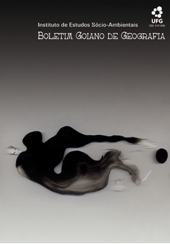VEGETATION REMNANTS IN THE PRIORITY AREAS FOR BIODIVERSITY CONSERVATION IN GOIÁS: DISTRIBUTION PATTERNS AND CHARACTERISTICS
DOI:
https://doi.org/10.5216/bgg.v28i2.5726Abstract
It is estimated that between 40 and 55% of the Cerrado biome, a major agricultural frontier in the country have been already converted. In the case of Goiás, recent surveys indicate about 35% of remnant savanna and forest formations, from which, only 12% are somehow protected. With this respect, in 2004, the Goiás Environment Agency (AGMA) finished the project Identification of Priority Areas for Biodiversity Conservation, which selected 40 areas (~ 82,297 km
2) of particular environmental relevance and/or vulnerability. In this paper, the distribution patterns and characteristics of the remnant vegetation within these areas (~ 34,155 km2) were investigated. Our results show that approximately 48% of the remnant cover is within a 500m distance from the major drainage network. This fact emphasizes the importance of the permanent protection areas as natural biodiversity corridors. Also important, is the significant correlation (r = 0.6) between the remnant proportion and poverty intensity in the priority areas
Downloads
Downloads
Published
How to Cite
Issue
Section
License
Authors will not receive any payment for publishing their work in Boletim Goiano de Geografia. Therefore, they must grant all rights to the journal. However, they are entirely and exclusively responsible for the published contents, and editors are free to make corrections or adjustments to texts in conformity with publication guidelines.







